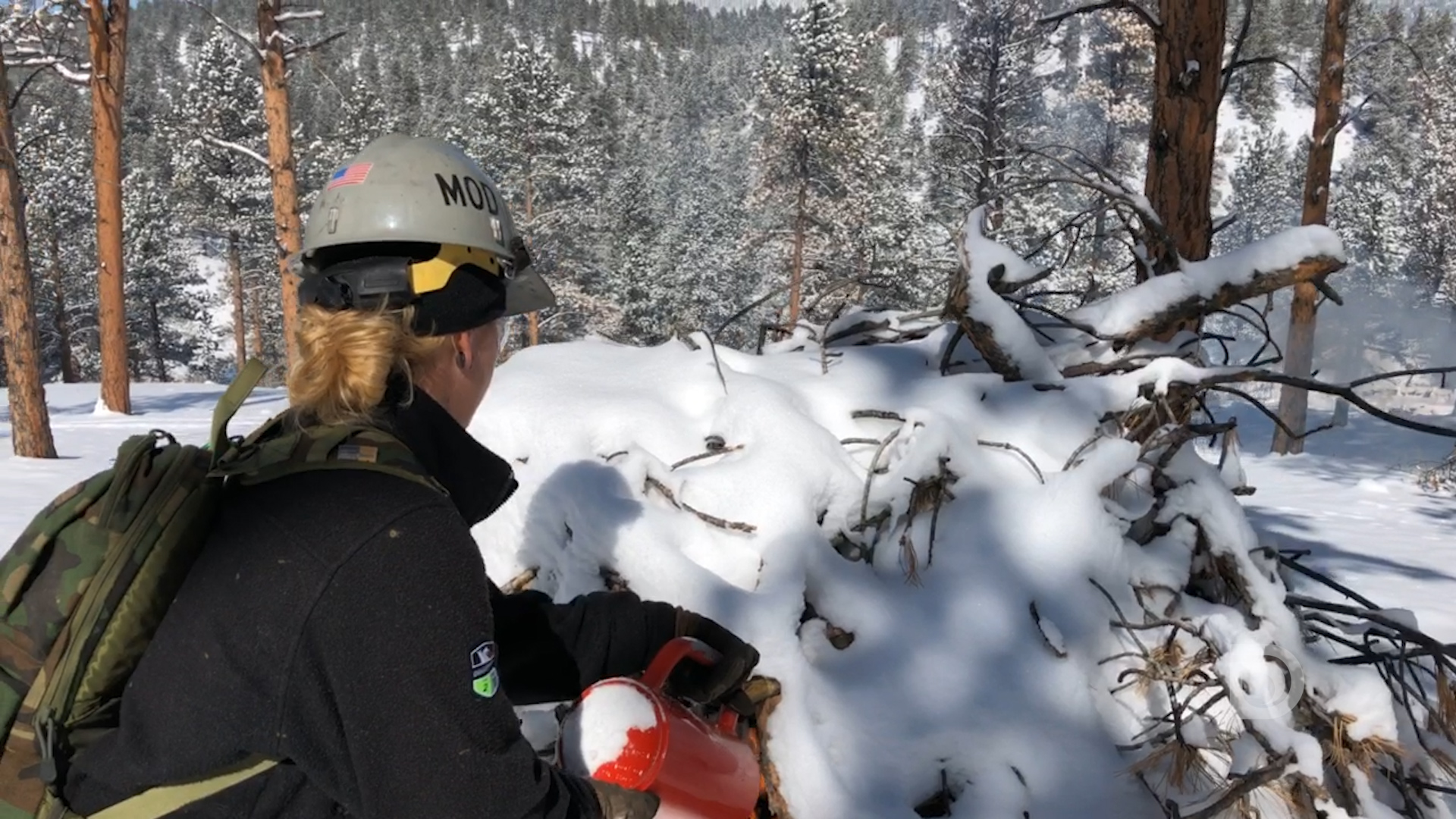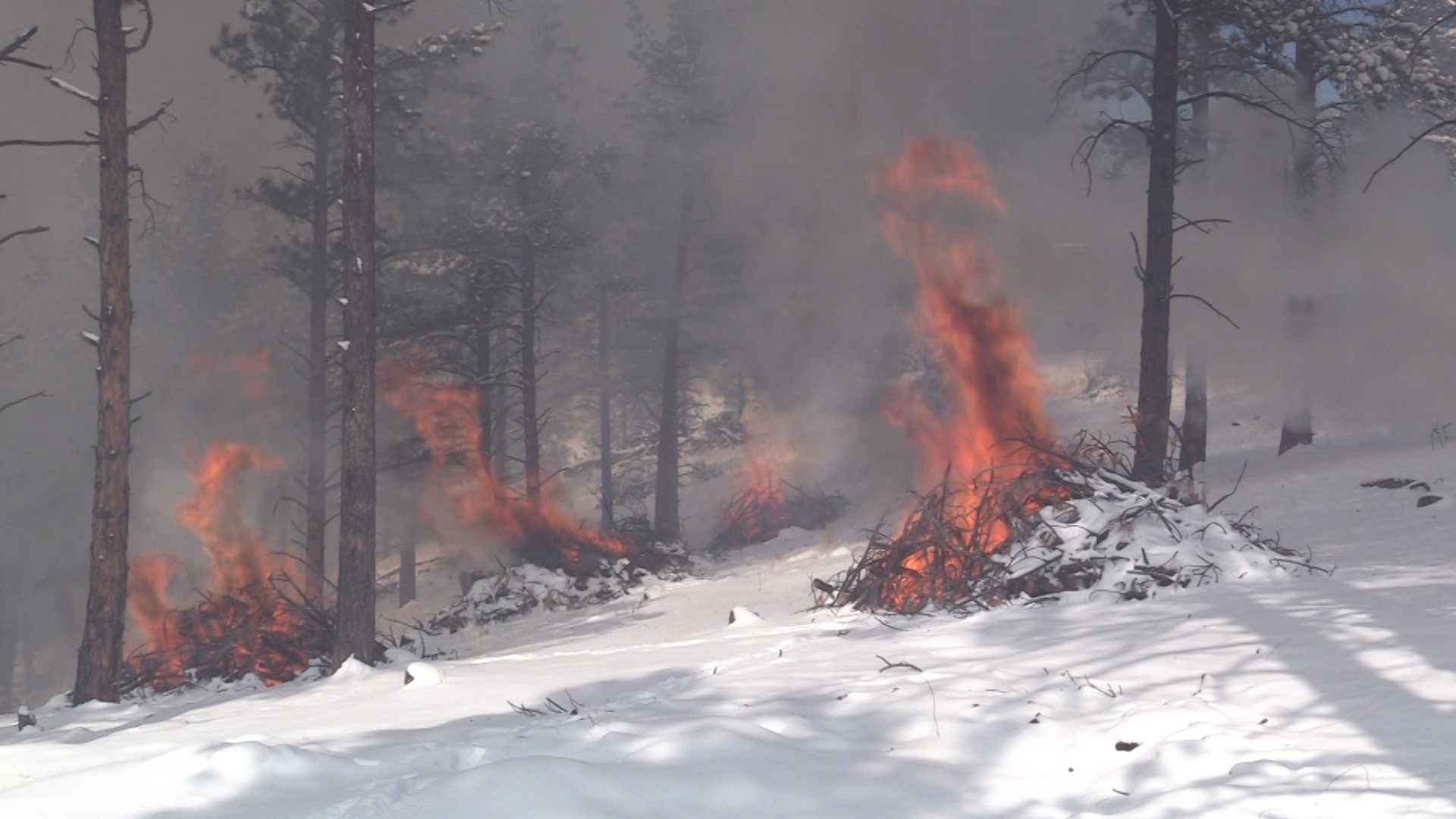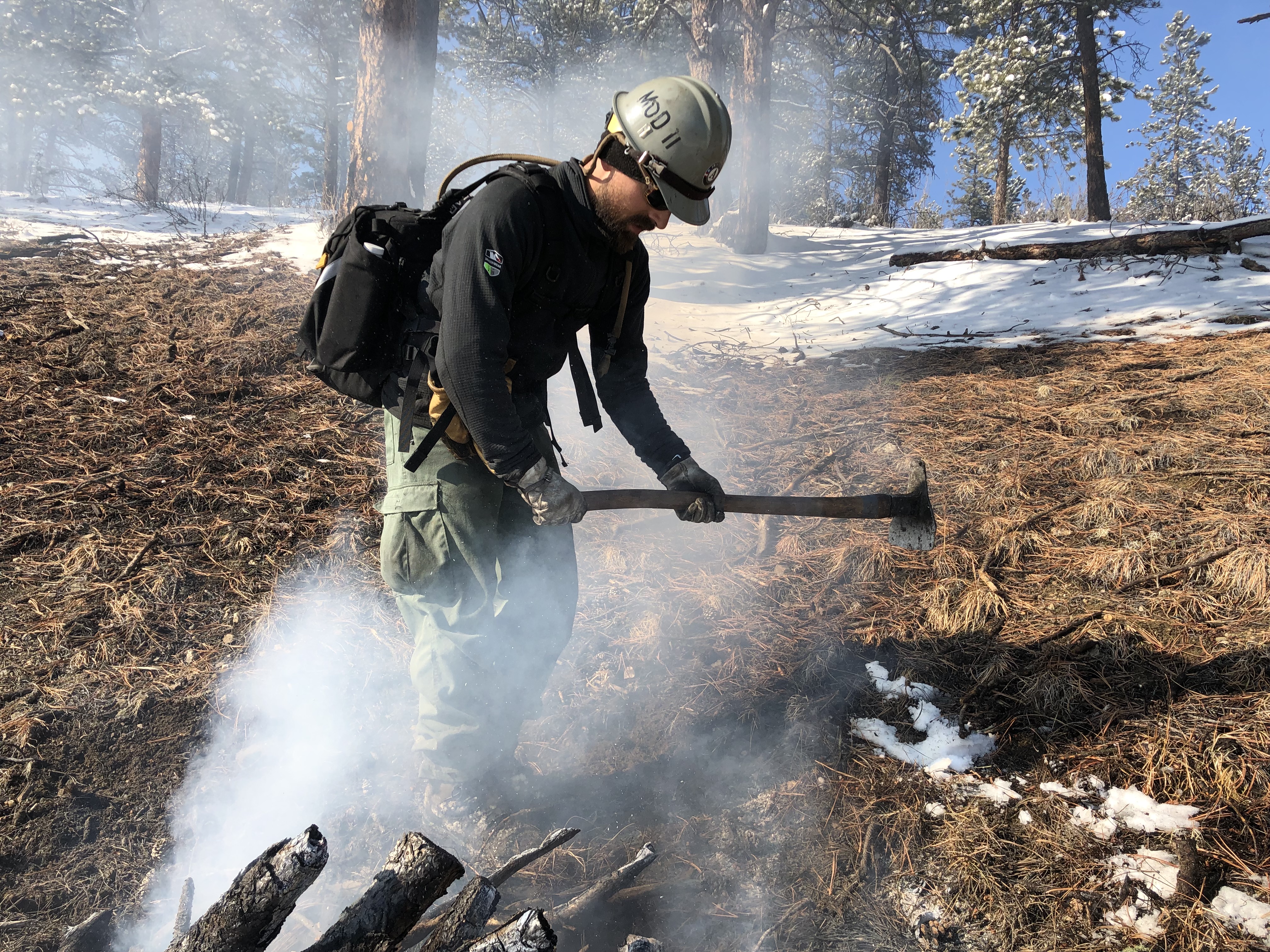
Setting fires in the forest — the story behind the smoke
Fresh off a late-winter snowstorm, members of Mile High Youth Corps trudge through the forest south of Bailey on a mission — they’re here to start fires.
“We hike across rugged terrain and use torches to ignite piles of slash,” said Cody Broncucia, crew leader for Mile High Youth Corps. “It’s a great opportunity for us to learn about forest management, put our skills to work and really help improve the forest.”
Mile High Youth Corps is a nonprofit organization started in 1992 that gives young people ages 16 to 24 a chance to get paid while learning hands-on job skills through service projects.
On this day in 2019, the young adults are taking part in a project funded through From Forests to Faucets, a partnership aimed at creating healthy forests and healthy watersheds. The partners include Denver Water, U.S. Forest Service, Colorado State Forest Service and Natural Resources Conservation Service.
The piles Broncucia’s crew tackle include trees and branches cut down several years ago during forest thinning projects. The corps members burn the piles in the winter, using the snow to reduce the amount of dry, flammable material in the forest that could feed a wildfire.
“We typically burn when there’s enough snow on the ground to prevent these man-made fires from spreading,” said Kyle Kerstiens, a senior firefighter with the Forest Service. “We also only burn when air conditions meet a set of strict requirements, so we don’t send a lot of smoke into nearby communities.”
The 18 corps members received wildland firefighting training with the Forest Service in December 2018. They will be burning hundreds of slash piles in the Pike National Forest southwest of Denver through April 27.
Forest restoration
Burning slash piles is just one element of the year-round forest restoration work funded through the From Forests to Faucets partnership.
“The water we collect for our customers starts as rain and snow that flows through the forests, so it’s important for us to invest in forest health,” said Christina Burri, lead watershed scientist at Denver Water.
Forest restoration work includes strategically removing trees, branches and underbrush. The goal is to reduce the amount of flammable material available to feed high-intensity wildfires capable of destroying thousands of acres of forests, threatening communities, impacting recreational areas, hurting wildlife and significantly damaging watersheds.
“Over the past 100 years, Colorado’s forests have become overly dense, due in part to fire suppression,” said Brian Banks, the U.S. Forest Service district ranger for the South Platte Ranger District. “When we thin parts of the forest, we strive to simulate how the land looked before people settled here, which makes the forest more resilient to catastrophic wildfires, insect infestations and disease.”
Unique partnership
The nationally recognized partnership began to prevent catastrophic wildfires like the 1996 Buffalo Creek Fire and the 2002 Hayman Fire, which caused significant damage to the forest in Denver Water’s watershed and two major reservoirs.
“Fires are a natural part of the ecosystem, so we’re not trying prevent them,” Kerstiens said. “By thinning the forest and removing flammable limbs and branches, we’re creating an environment that will see less-intense fires, which are beneficial to overall forest health.”
Since 2011, the partners involved in From Forest to Faucets have invested $66 million in forest health projects spread across 96,000 acres in Denver Water’s priority watersheds.
“It’s a great partnership,” Kerstiens said. “Water is so important across the West and we’re happy to do our part to protect the forests and the water supply.”




